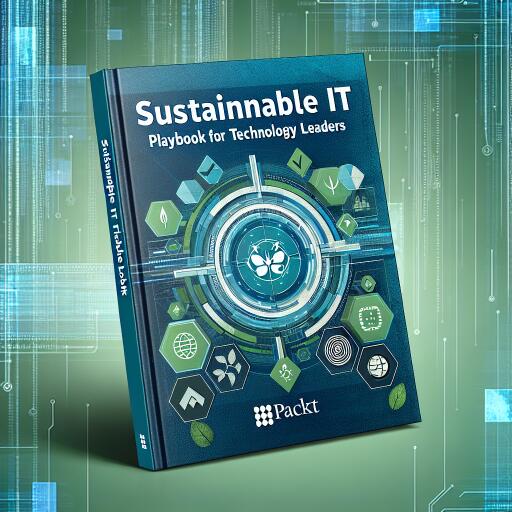
Sustainable IT Playbook for Technology Leaders
In an era where climate change poses one of the greatest challenges to our planet, the technology sector finds itself at a critical juncture. The impact of Information Technology (IT) on the environment is undeniable, yet it also holds the key to ushering in more sustainable practices. This exploration delves into the crucial role that technology leaders play in steering the world towards a greener future, guided by the insights from pivotal reports and climate change accords.
The Current Climate Scenario
The World Economic Forum’s 2022 global risks report positions climate action failure as the foremost risk we face over the coming decade. The climate crisis manifests in extreme weather events worldwide, from scorching heatwaves to devastating wildfires, underlining the urgent need for a sustainable shift. Despite burgeoning solutions to curb these challenges, greenhouse gas (GHG) emissions have surged by over 50% since 1990, indicating a dire need for immediate action.
The concept of net-zero carbon emissions has increasingly become a focal point in climate policy, particularly following the Paris Agreement’s aim to limit global temperature rise to well below 2°C, preferably to 1.5°C. Achieving net-zero requires halving GHG emissions by 2030 and attaining net-zero by 2040 or 2050, a target echoed by the United Nations Environment Program’s 2020 Emissions Gap Report.
Understanding Carbon Footprint in IT
A carbon footprint represents the total GHG emissions caused by individual or corporate activities. For the IT sector, this includes emissions from producing devices like laptops and smartphones, commuting, and data center operations, among others. Highlighting the effort to quantify these emissions, certain comparisons bring the scope of these impacts into sharper focus. For instance, a single transatlantic flight or the energy used in mining Bitcoin can generate significant CO2 emissions, revealing the environmental cost of our choices and technologies.
Charting a Path to Sustainability
Addressing climate change demands a comprehensive approach that encompasses energy consumption, industrial processes, agriculture, transportation, and preserving natural ecosystems. To this end, leaders in the IT sector have a pivotal role in adopting and promoting practices that minimize carbon emissions and environmental degradation. This includes transitioning towards renewable energy sources, optimizing manufacturing processes, and enhancing waste management, especially in handling electronic waste (e-waste).
The Role of Technology in Achieving Net-Zero
The journey towards a sustainable future is complex, requiring nuanced decisions that balance economic, environmental, and social considerations. Here, technology plays a crucial role, offering data-driven solutions that enable more informed and impactful actions. Leveraging advancements in information and communications technology (ICT), artificial intelligence (AI), and analytics can significantly enhance resource efficiency and foster innovation in sustainable practices.
International Efforts and Frameworks
The Paris Agreement marked a significant step towards global climate action, urging countries to formulate and report their strategies to achieve net-zero emissions. Similarly, the UN’s Sustainable Development Goals (SDGs) outline a blueprint for a more sustainable future on a broad scale. Additionally, the European Union’s Green Deal and Taxonomy aim to classify and direct investments towards sustainable projects, reflecting a growing consensus on the need for collective action and accountability in addressing the climate crisis.
The Way Forward for Sustainable IT
For the IT sector, embracing sustainability is not just about mitigating risks but also about seizing the opportunities that a low-carbon economy presents. Corporate leaders have the responsibility and opportunity to drive change through strategic decision-making, innovative solutions, and adherence to emerging standards and guidelines. By prioritizing sustainability in IT practices, companies can contribute significantly to global efforts to combat climate change while positioning themselves for long-term success in an evolving world.
As technology continues to influence every aspect of our lives, the imperative for sustainable IT has never been clearer. It is time for technology leaders to step up, reimagining their operations and products to safeguard the planet for future generations. In doing so, the IT sector can lead the way in creating a sustainable, prosperous future for all.





Leave a Reply